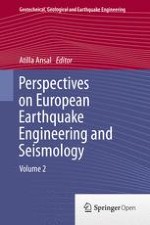19.1 Introduction
Date and time | Latitude | Longitude | Magnitude | Casualties | Region |
|---|---|---|---|---|---|
1906/01/31 15:36 | 1.0 | −81.5 | 8.8 | 1,000 | Colombia-Ecuador |
1922/11/11 04:32 | −28.553 | −70.755 | 8.5 | Chile-Argentina Border | |
1923/02/03 16:01 | 54.0 | 161.0 | 8.5 | Kamchatka | |
1938/02/01 19:04 | −5.05 | 131.62 | 8.5 | Banda Sea | |
1950/08/15 14:09 | 28.5 | 96.5 | 8.6 | 1,526 | Assam-Tibet |
1952/11/04 16:58
|
52.76
|
160.06
|
9.0
|
Kamchatka, Russia
| |
1957/03/09 14:22 | 51.56 | −175.39 | 8.6 | Andreanof Islands, Alaska | |
1960/05/22 19:11
|
−38.29
|
−73.05
|
9.5
|
1,655
|
Chile
|
1963/10/13 05:17 | 44.9 | 149.6 | 8.5 | Kuril Islands | |
1964/03/28 03:36
|
61.02
|
−147.65
|
9.2
|
125
|
Prince William Sound, Alaska
|
1965/02/04 05:01 | 51.21 | −178.50 | 8.7 | Rat Islands, Alaska | |
2004/12/26 00:58
|
3.295
|
95.982
|
9.1
|
227,898
|
off the west coast of northern Sumatra
|
2005/03/28 16:09 | 2.074 | 97.013 | 8.6 | 1313 | Northern Sumatra, Indonesia |
2007/09/12 11:10:26 | −4.438 | 101.367 | 8.5 | 25 | Southern Sumatra, Indonesia |
2010/02/27 06:34:14 | −35.846 | −72.719 | 8.8 | 577 | Offshore Maule, Chile |
2011/03/11 05:46:23
|
38.322
|
142.369
|
9.0
|
28,050
|
Near the East Coast of Honshu, Japan
|
2012/04/11 08:38:37 | 2.311 | 93.063 | 8.6 | off the west coast of northern Sumatra |
19.2 Mega-thrust Earthquakes
-
All occur on subduction zones along the plate interface and cluster in time.
-
All related to strong coupling along the plate interface, where the location and physical properties of the asperities are critical.
-
Total slip is controlled by the size and the location of the strongest asperity(s) and if shallow, also controls the resulting tsunami size.
-
Along-dip segmentation of the interface is observed and rupture may include the shallow trench-ward section.
-
Along-strike segment boundaries are associated with large structural controls on the subducting plate (earlier sea-floor heterogeneities such as sea mount chains, ridges, fracture zones, etc.).
-
All cause significant stress changes in the neighboring segments (including the outer-rise) and hence increase the likelihood of other mega-thrust events.
-
All have clear signs of fore-shock activity and significant aftershock activity outside the main asperities.
19.3 Deformation Cycle in Subduction Zones
-
Structural data (conventional geology/geophysics)
-
Petrophysical data (conventional petrology/geochemistry)
-
Seismological data (conventional source parameters)
-
Slip inversions based on seismological data for a broad-band of frequencies (backprojection methods for remote arrays etc.)
-
Seismic tomography at a regional and detailed scales
-
Seismic anisotropy
-
Reflection/refraction profiles
-
Potential field measurements (gravity, magnetics)
-
Sattelite geodesy (GPS, InSAR, TEC)
-
Borehole data
-
Statistical data
-
Paleoseismological data
-
Tsunami data (run-up, modeling)
-
Bathymetric surveys+DEM (digital elevation models at local scales)
19.4 Rupture Preparation and Post-seismic Slip
19.5 Segmentation of the Plate Interface
-
Direction and speed of the plate convergence.
-
Differences in the rheology/composition of the two colliding plates.
-
Age and density difference between and density variations within colliding plates.
-
Physical/morphological/geological irregularities along the plate interface.
-
The degree of coupling along the plate interface between the overriding plate and the subducting slab.
-
Accumulated stress/strain.
-
Fluid flow along the plate interface.
-
Heat gradient and heat-flow.
-
Melting process at the magma wedge. Mantle flow and circulations in the subduction system.
19.6 Mapping Asperities
19.7 Future Perspectives
-
Mapping the location of strongly coupled plate interface along subduction zones (GPS and stress modeling, stress transfer)
-
Mapping the location and size of the largest asperities (Gravity, TPBA, seismic tomography)
-
Mapping rupture areas of previous historical and instrumental mega-thrust earthquakes (historical accounts, slip distribution of previous instrumental mega-thrust earthquakes)
-
Developing segmentation models for the subduction zones (mapping heterogeneities in the ocean-floor)
-
Monitoring overriding plate deformation (geodetic measurements of interseismic period through GPS, InSAR)
-
Monitoring space/time variations of seismicity in the interseismic period (dense BB-station networks)
-
Identifying foreshock activity (detailed seismic monitoring)
-
Identifying ionospheric disturbances (TEC measurements)
